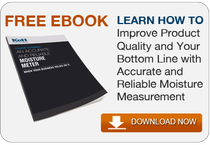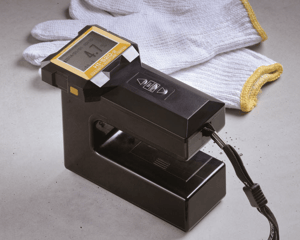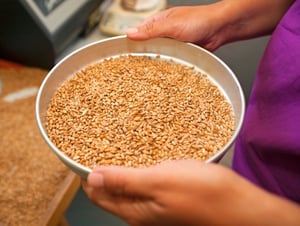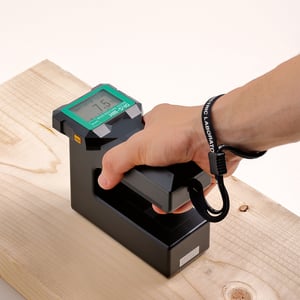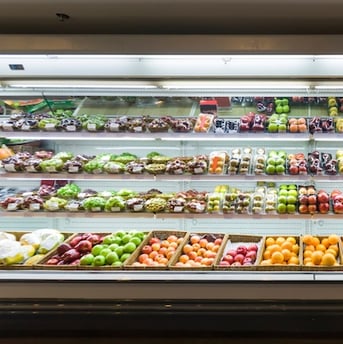 When it comes to designing packaging for fresh produce, the #1 goal of the packaging should be to maximize the freshness and longevity of the product. After all, no one wants to buy “fresh” produce that isn’t fresh anymore, right?
When it comes to designing packaging for fresh produce, the #1 goal of the packaging should be to maximize the freshness and longevity of the product. After all, no one wants to buy “fresh” produce that isn’t fresh anymore, right?
In order for food packagers to accurately assess their produce and determine its packaging requirements, there are two critical measurements that they should take: moisture content and water activity. Though both might sound the same, they reveal different insights about the yield, quality, and safety of your food. While water activity might be one key measurement for determining the safe shelf life and packaging requirements, moisture content also provides a product parameter that can help you establish safe fresh produce packaging protocols. For example, every food product has an upper limit to the amount of moisture it can contain before it becomes unstable. A moisture measurement instrument, like our portable KJT130, can help you determine the appropriate level of humidity within your packaging to avoid spoilage.
Because of the high perishability of fresh produce, it’s essential that you take the produce type, humidity, and temperature into consideration when designing your product’s packaging in order to restrict pathogen growth. Here’s why:
Produce Type
Plain and simple, different types of produce call for different packaging requirements. In fact, each type of produce has a target moisture “sweet spot,” where both water activity and pathogen growth are at their lowest. This relationship between water activity and moisture content is known as the moisture sorption isotherm, and explains how water is adsorbed into, and desorbed from a product held at a constant temperature. Once you've determined the moisture content/water activity relationship for a type of produce, you need to monitor and control the moisture content so your product will be below the water activity threshold (and thus will have maximum shelf-life and moisture content.)
Proper monitoring and control of moisture content and water activity in produce packaging comes down to two main storage/packaging conditions: humidity and temperature.
Humidity
Since high humidity prevents pathogens from breaking down after harvest, humidity is a major influencer on the moisture content and shelf life of your products. That being said, regular moisture analysis can improve the control of humidity and moisture levels within your packaging, enabling more restrictions on pathogen growth throughout your product’s shelf life. During each stage of the packaging process, make sure to test the moisture content of your product to ensure it stays within the safe product parameters in different environments. Moisture measurement instruments, like the online KB30, are able to instantly detect even the smallest variances in moisture content, which can have a large impact on water activity and shelf life.
Temperature
Similar to humidity, the temperature of your product’s storage environment can impact the shelf life of your produce. Once you’ve packaged your produce within its safe moisture content parameters, it’s critical to maintain safe storage temperatures within the supply chain and on the shelf in order to maximize its shelf life. Temperature has a direct influence on relative humidity. Relative humidity is the surrounding air’s ability to hold water in vapor form. As temperature increases, the amount of water the air can hold is much greater, lowering relative humidity (and vice versa). If the product’s relative humidity changes, there will also be alterations to the ideal moisture content and water activity. Figuring out the different storage environments your product will be subjected to, and making sure your packaging keeps it within the safe parameters at every temperature range, ensure the highest level of food safety for each type of produce. In order to achieve the highest level of safety and packaging, you can use sorption isotherms to determine safe water activity levels given the moisture content and temperature.
When it comes to maximizing the shelf life and quality of your fresh produce, it’s essential that food manufacturers regularly take moisture measurements throughout the production process in order to determine the ideal packaging requirements for that specific food. Each type of produce has its own set of ideal packaging requirements; therefore, believing that a “one-size-fits-all” packaging approach to maximize shelf life or freshness will not work.
In order to create packaging for your fresh produce that maximizes safety, quality, and longevity, food manufacturers need moisture measurement instruments that are highly accurate, verifiable, and simple to use.
To learn more about how Kett moisture measurement devices can help you maximize the quality and freshness of your food product packaging, call us at (714) 974-8837 or click here to talk to one of our qualified engineers.
